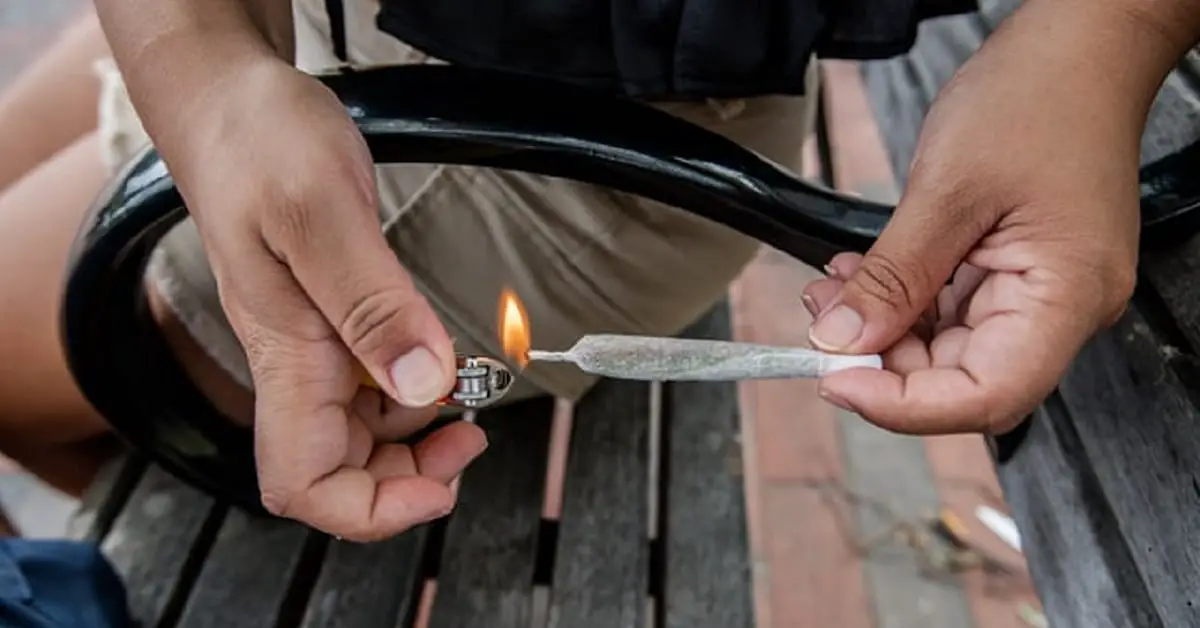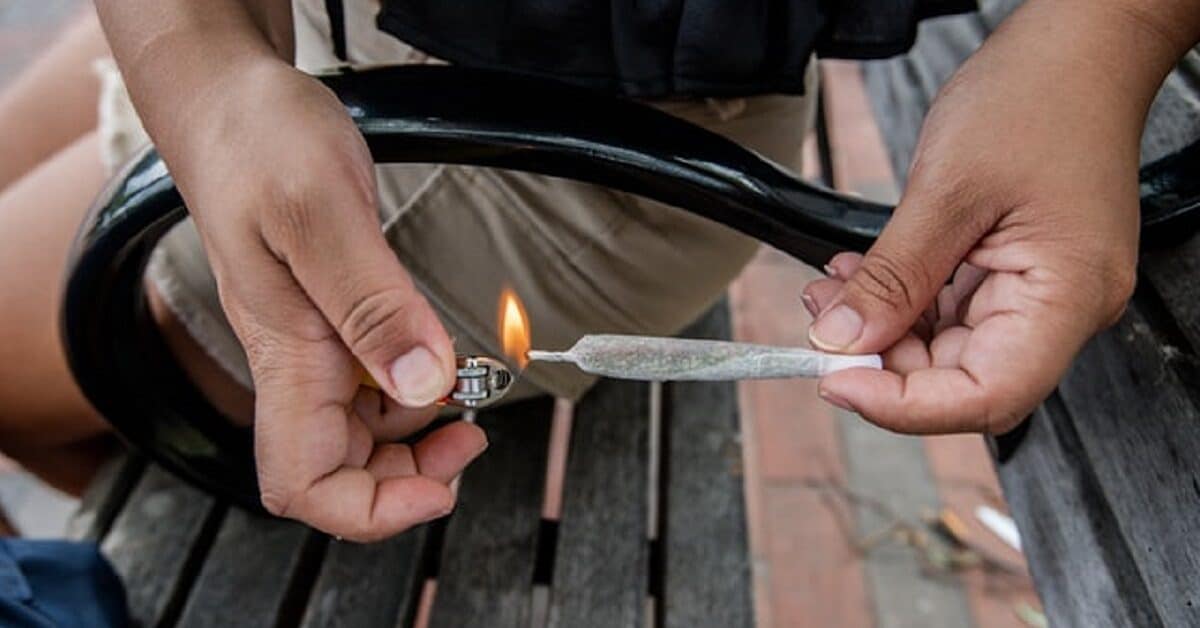
People research herbs to smoke for various reasons.
Many smokers trying to stop quit tobacco or overcome nicotine dependence believe herbal cigarettes can help them quit. Others want to switch to smoking herbs because they believe tobacco-free herbal cigarettes are safe.
Likewise, some people trying to stop smoking marijuana (weed) or overcome dependence on its main psychoactive component delta-9-tetrahydrocannabinol (Δ-9-THC), resort to herbs because they believe they are safe alternatives.
Others who have permanently stopped smoking tobacco or weed choose to stay on herbal cigarettes to reduce the risk of relapse to their old habits.
While many smoke herbs because they believe they are safer nicotine-free alternatives to tobacco, others believe they offer alternative therapeutic approaches to managing stress and related problems, such as anxiety, mood, and sleep disorders (depression and insomnia).
People also smoke herbs because they believe it helps improve wakefulness, alertness, focus, concentration, and cognitive function. Others want to boost energy, stamina, and even sexual function.
CARE healthy living noted that mental stress, anxiety, and mood disorders are among the most prevalent mental health problems. They are also among the most common reasons people search for information about herbs they can smoke.
Doctors usually treat anxiety and depression with medication, such as buspirone, benzodiazepines, and SSRIs. However, due to the risk of adverse side effects when taking prescription drugs, there is a growing interest in herbs, including those believed to be safe to smoke, as alternatives to prescription drugs.
However, there is a minority who seek herbs to smoke because they want new psychoactive substances that may deliver novel psychotropic or psychedelic (mind-altering) experiences.
Contents:
Can you make your own herbal cigarettes?
60 herbs considered alternatives to tobacco
Why herbal cigarettes aren’t good for your health
What are herbal cigarettes?
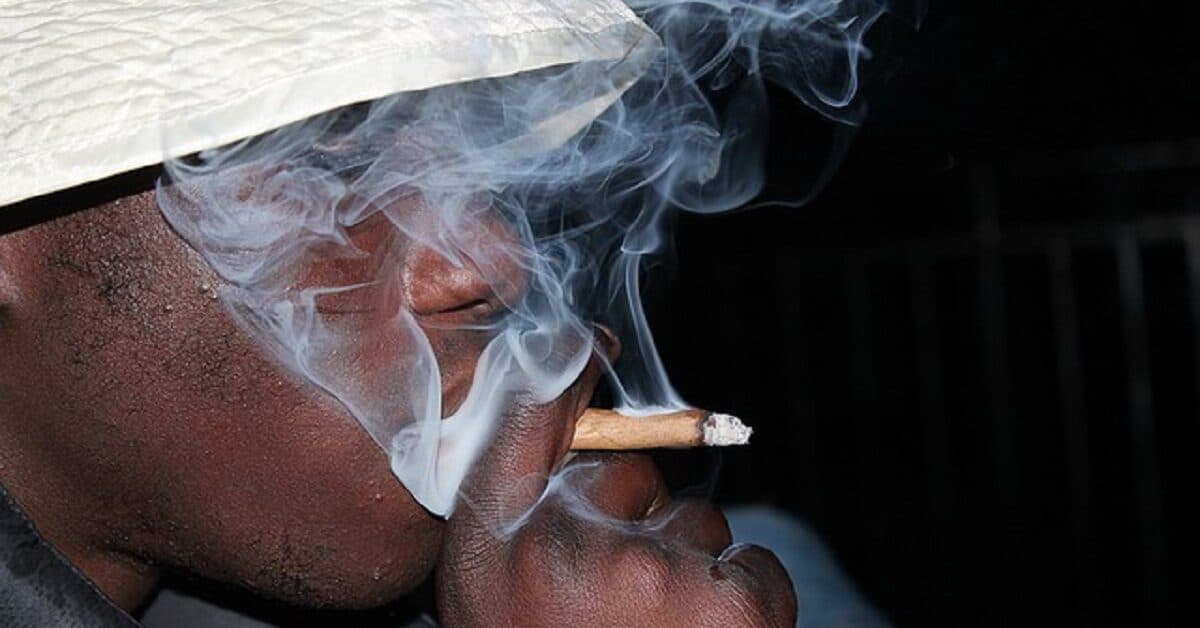
The demand for herbs to smoke has stimulated the growth of the herbal cigarette market.
There are currently many brands of herbal cigarettes. Many commercial producers and marketers try to promote their herbal blends with claims about alleged health benefits. But as we shall later discuss, these claims are questionable and you should take them with caution.
Herbal cigarettes are prepared from dried ground leaves or flower petals, usually with the plant stems removed. You may scroll down to view a comprehensive list of the most widely smoked herbs. But keep in mind that most commercial herbal cigarettes contain a blend of herbs and plant products — usually base ingredients mixed with flavoring agents.
The base ingredients are usually herbs with bland, light or smooth flavors, such as mullein leaves or red raspberry leaves. The base ingredients may be blended with other herbs that contain the pharmacologically active substances that give the blend its sought-after potency (mugwort, catnip, skullcap, California poppy, hops).
Commercial brands of herbal and herbal-tobacco cigarettes that recently gained popularity include clove cigarettes (kreteks) and bidis. Many were imported from India and Southeast Asian countries.
Clove cigarettes (kreteks) are mainly blends containing tobacco, cloves (a spice made from the flower buds Syzygium aromaticum), and other ingredients.
Bidis contain a blend of tobacco and other plants. They are tobacco cigarettes hand-rolled in tendu leaves obtained from Diospyros melanoxylon (coromandel ebony or temburni), a tree native to India.
Can you make your own herbal cigarettes?
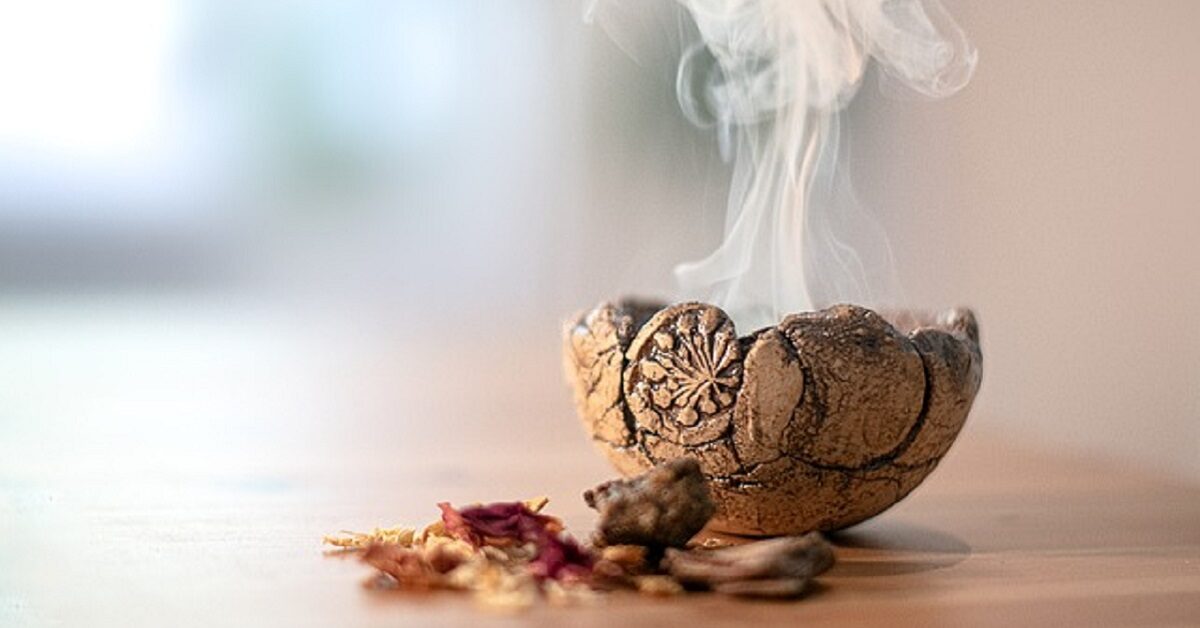
Due to concerns that pre-rolled herbal blends may contain tobacco and other unspecified plant products, many people trying to quit tobacco by switching to herbal cigarettes prefer to make their own blends. Some create and roll their own proprietary herbal blend because they want to be sure of what they are smoking.
Some smokers even grow herbs themselves.
Disclaimer
Our list of 60 widely smoked herbs (see below) is provided only for informational purposes. We don’t recommend herbs as safe to smoke for any purpose. We strongly advise you not to resort to self-treatment by smoking herbs for health reasons, such as quitting tobacco, overcoming nicotine dependence, or treating physical and mental health issues.
If you are trying to quit tobacco or overcome nicotine addiction, we suggest that you seek the help of a qualified health professional or addiction specialist.
If you decide in consultation with your healthcare provider to use herbs for adjunctive or complementary treatment of any physical or mental health issue besides nicotine dependence, there are much safer ways than smoking to gain the potential health benefits of herbs. Your healthcare professional will guide you.
While recent scientific research suggests that some herbs may well have health benefits, smoking is not the best way to get those potential benefits.
We discuss healthier alternatives to smoking herbs so that you can make an informed decision about your health.
Are tobacco-free herbal cigarettes safe?
Why herbal cigarettes aren’t good for your health
60 herbs considered alternatives to tobacco
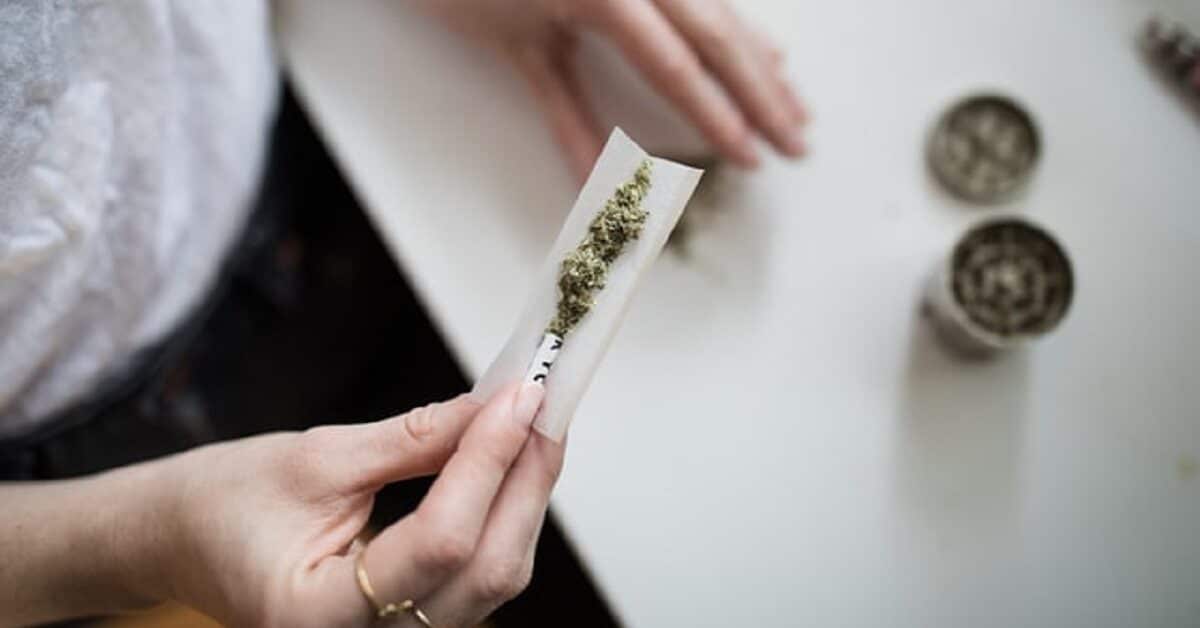
Herbs claimed to be useful for people who want to quit smoking tobacco (or marijuana), overcome nicotine addiction, or reduce the risk of relapse, are often promoted as “smokable herbs.”
The so-called “smokable herbs” are promoted as safer or healthier alternatives because they are “natural,” tobacco/nicotine-free, non-addictive, nonpsychoactive, or non-hallucinogenic.
Our list of 60 herbs widely considered alternatives to tobacco includes many with potential and confirmed psychoactive activity. The psychotropic properties of many herbs are among reasons some users want to smoke them. Smoking is a very effective way of delivering psychoactive substances quickly to the bloodstream with maximum effect, compared with other routes.
Our list also reveals that most psychoactive plants belong to a few plant families, including Asteraceae, Lamiaceae, Fabaceae, Rosaceae, and Salicaceae.
- Aconite or wolf’s-bane (genus Aconitum; family Ranunculaceae) – psychoactive, poisonous
- Angel’s trumpets (genus Brugmansia; Solanaceae) – psychoactive (deliriant)
- Banisteriopsis caapi (Malpighiaceae) – psychoactive (a component of ayahuasca decoction)
- Belladonna or deadly nightshade (Atropa belladonna; Solanaceae) – psychoactive
- Bergamot (Citrus bergamia; Rutaceae)
- Blackberry leaf (genus Rubus; Rosaceae)
- Blue lotus flower (Nymphaea caerulea; Nymphaeaceae), also known as Egyptian water lily, blue lotus – psychoactive
- Calendula (genus Calendula; Asteraceae)
- California poppy (Eschscholzia californica; Papaveraceae) – psychoactive (anxiolytic)
- Catnip (Nepeta cataria; Lamiaceae)
- Chamomile ( Matricaria recutita; Asteraceae)
- Cloves (Syzygium aromaticum; Myrtaceae) – psychoactive (mildly mood-altering)
- Coltsfoot (Tussilago farfara; Asteraceae)
- Dagga or Lion’s tail (Leonotis leonurus; Lamiaceae)
- Damiana (genus Turnera; Passifloraceae)
- Devil’s tobacco (Lobelia tupa; Campanulaceae) – psychoactive (hallucinogenic)
- Desfontainia (genus Desfontainia; Columelliaceae)- psychoactive, poisonous
- Fly agaric (genus Amanita muscaria; Amanitaceae) – psychoactive (hallucinogenic mushroom)
- Ginger Root (Zingiber officinale; Zingiberaceae)
- Guamura (Cecropia mexicana; Cecropiaceae)
- Hawkweed (genus Hieracium; Asteraceae) – psychoactive
- Henbane (Hyoscyamus niger; Solanaceae) – psychoactive
- Hops (Humulus lupulus; Cannabaceae) – potential psychotropic activity (anxiolytic)
- Hyssop (Hyssopus officinalis; Lamiaceae)
- Jasmine flower (Oleaceae)
- Korean Ginseng (genus Panax; Araliaceae)
- Lavender (genus Lavandula; Lamiaceae) – psychotropic (anxiolytic, antidepressant effect)
- Lemon balm (Melissa officinalis; Lamiaceae) – potentially psychoactive (anxiolytic)
- Licorice root (Glycyrrhiza glabra; Fabaceae)
- Lotus leaf (Nelumbo nucifera; Nelumbonaceae)
- Magic mushroom or shrooms (genus Psilocybe; Hymenogastraceae) – psychoactive (psychedelic)
- Mandrake (genus Mandragora; Solanaceae) – psychoactive
- Marshmallow roots (Althaea Officinalis; Malvaceae)
- Mugwort (genus Artemisia; Asteraceae)
- Mullein (Verbascum thapsus; Scrophulariaceae)
- Passionflower (genus Passiflora; Passifloraceae) – psychoactive (anxiolytic)
- Peppermint (Mentha piperita: Lamiaceae) – psychoactive
- Psychotria viridis or chacruna (Rubiaceae) – psychoactive (a component of ayahuasca decoction)
- Red clover flower (Trifolium pratense; Fabaceae): Some studies suggest it has anxiolytic and antidepressant properties
- Red raspberry leaf (Rubeus idaeus; Rosaceae)
- Rose petals (Rosa damascena; Rosaceae) – psychoactive (hypnotic)
- Red willow bark (Salix laevigata; Salicaceae)
- Skullcap (genus Scutellaria; Lamiaceae) – psychoactive (potential antidepressant properties)
- Spearmint (Mentha spicata; Lamiaceae)
- St. John’s Wort (Hypericum Perforatum; Hypericaceae) – psychoactive (antidepressant activity)
- Thyme (genus Thymus; Lamiaceae)
- Uva-ursi or bearberry (Arctostaphylos uva-ursi; Ericaceae)
- White horehound (Marrubium vulgare; Lamiaceae)
- White sage (Salvia apiana; Lamiaceae) – psychoactive (mildly mood-altering)
- Willow bark (genus Salix; Salicaceae)
- Wormwood (Artemisia absinthium; Asteraceae)
Graziano and colleagues (2017) listed the following herbs as having psychedelic or hallucinogenic properties:
- Argyreia nervosa, also known as Hawaiian baby woodrose, elephant creeper, woolly morning glory (Convolvulaceae) – psychedelic
- Ipomoea violacea, also known as beach moonflower, sea moonflower morning glory, pearly gates (Convolvulaceae) – psychedelic
- Ipomoea corymbosa or Rivea corymbosa, also known as Christmasvine, Christmaspops, or snakeplant (Convolvulaceae) – seeds have psychedelic properties
- Datura stramonium, also known as Jimsonweed, thorn apple, devil’s snare, devil’s trumpet (Solanaceae) – hallucinogen
- Kava-kava (Piper methysticum; Piperaceae) – the root of kava is consumed as a beverage with sedative, anxiolytic, and euphoriant properties, but some have been known to smoke it.
- Kratom (Mitragyna speciosa; Rubiaceae) – psychoactive
- Salvia divinorum, magic mint or diviner’s sage (f. Lamiaceae) – psychoactive
- Hallucinogenic cacti (Cactaceae), such as peyote (Lophophora williamsii) and San Pedro cactus (Echinopsis pachanoi/Trichocereus pachanoi)
- Tabernanthe iboga (Apocynaceae): The roots and barks of the Central African tree have hallucinogenic properties.
Alrashedy and associates (2016) identified the following plant families as being disproportionately represented among “smokable” psychoactive plants:
- Myristicaceae (nutmeg)
- Papaveraceae (opium poppy)
- Cactaceae (peyote)
- Convolvulaceae (morning glory)
- Solanaceae (tobacco)
- Lamiaceae (mints)
- Apocynaceae (dogbane)
Are herbal cigarettes safe?
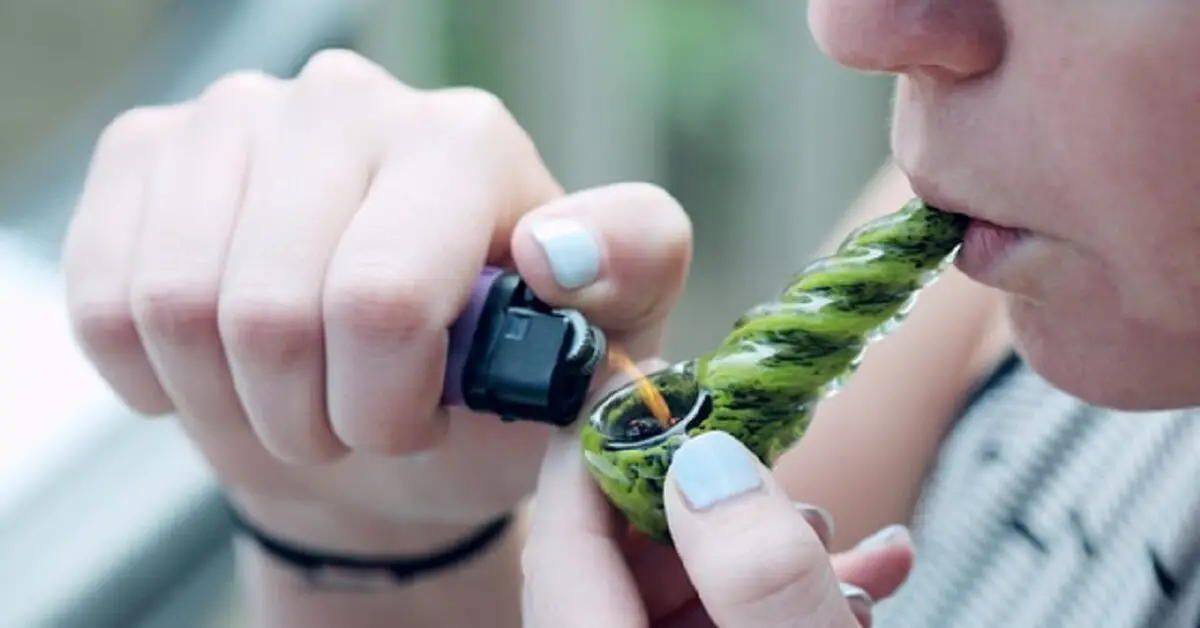
The use of herbs as supplements and for medicinal purposes is gaining popularity due to people seeking alternative treatments for various ailments, including anxiety, depression, and micronutrient deficiencies, such as iron deficiency anemia.
Many are embracing the use of herbs partly due to the widely held perception that they are safer because they are “natural.”
Unfortunately, the notion that herbs are safe because they are “natural” is often mistaken. Although herbs are rich in vitamins, minerals, gut health-promoting fibers, antioxidants, and pharmacologically active substances that confer many health benefits, they also often contain substances that may be toxic and harmful to health.
Thus, regardless of how you take your herbs (teas, extracts, tinctures, powders, oils, capsules, or dried leaves for smoking), you need to research and learn about the benefits and possible adverse effects.
Although many herbs have been shown to have health benefits, they may also — like tobacco — contain toxic substances that are harmful to health.
Thus, despite the belief that herbs are safe because they are “natural,” you have to exercise caution and ascertain the safety and efficacy of herbs recommended for health benefits.
To illustrate the danger of the widely held notion that herbs are safe because they are “natural,” we may cite tobacco as an example.
Tobacco (genus Nicotiana; family Solanaceae) is the most widely smoked herbaceous plant. Tobacco cigarettes are made from the cured leaves of Nicotiana tabacum, a plant native to North and South America (Mishra and Mishra, 2013). Historians believe that tobacco use originated among Mesoamerican cultures, specifically the Mayans of Central America. They were reportedly using the herb by the first century BC for medicinal and religious purposes.
Portuguese and Spanish sailors introduced the plant to Europe, and it quickly gained importance as an international cash crop.
Europeans considered tobacco a medicinal herb after it was introducted to the continent, and by the late 16th century, physicians were prescribing it as a remedy for various ailments (Sanchez-Ramos, 2020).
However, subsequent research in the 20th century suggested that tobacco smoke caused various cancers, including cancers of the oral cavity, throat, esophagus, larynx, lungs, bronchi, trachea, stomach, pancreas, colon, rectum, cervix, kidney, and liver, according to CDC.
Tobacco smoke carcinogens include polycyclic aromatic hydrocarbons (PAHs), N-nitrosamines, aromatic amines, alkenes (1,3-butadiene, ethylene oxide), aldehydes (formaldehyde, acetaldehyde), volatile organic hydrocarbons (benzene, ammonia), radioactive elements (Polonium-210), and metals (lead, arsenic, Beryllium, Cadmium, Chromium, nickel).
Besides carcinogens, tobacco contains many toxins, such as nicotine (the main addictive substance) and hydrogen cyanide.
Tobacco leaves contain nicotine in the form of nicotine salts. Research studies have shown that nicotine is a mutagen and carcinogen. It can induce DNA damage that causes cancer.
Governments have attempted to reduce the health risks of smoking tobacco through measures, such as taxes, restricting public smoking, and regulating promotions and ads.
Why herbal cigarettes aren’t good for your health

Many have taken to smoking various herbs because they believe they are safer alternatives to tobacco and nicotine. But researchers are working on identifying the potentially addictive or carcinogenic substances in some of the most commonly smoked herbs.
Chen and associates (2007) reported that although some marketers claimed that herb-tobacco and herb-only cigarettes are safer than tobacco-only cigarettes, there was no evidence to back the claims.
While research is ongoing to identify the toxic and carcinogenic products in various herbs, there is a growing body of scientific evidence that smoking herbs may be as harmful as smoking tobacco products, if not more harmful in some cases.
Although your herbal cigarette may not contain nicotine, it may contain other psychoactive, addictive, and carcinogenic substances.
Siegel identified 25 psychoactive substances in various herbal preparations that marketers promoted as good for “health and happiness.” The author recommended that physicians be alerted to the psychoactive substances in herbal cigarettes and their potential roles in causing various ailments.
In cases where your choice of herbs to smoke does not contain any known psychoactive, hallucinogenic, or addictive substance, it still very likely generates carcinogenic substances when smoked.
The act of smoking plant and herbal products leads to the inhalation of toxic products that may directly harm the tissues of your mouth, throat, and lungs.
Smoking is inherently harmful because it involves combustion that releases toxic, injurious, and carcinogenic chemicals, such as tar, carbon monoxide, and various potentially toxic phytochemical fumes.
Bak and associates (2015) reported that although herbal cigarettes have gained popularity as non-smoking aids, very little was known about their safety compared with regular tobacco-based cigarettes. The researchers analyzed some of the popular brands of herbal cigarettes in Korea for toxic components and mutagenicity.
They concluded that the mainstream smoke of many herbal cigarettes contained many toxic and mutagenic combustion products similar to commercial brands of tobacco-based cigarettes.
They found that many herbal cigarettes contained more toxic products — such as carbon monoxide and benzo(a)pyrene (a highly mutagenic and carcinogenic polycyclic aromatic hydrocarbon) — than regular tobacco brands. They also contained higher levels of potentially carcinogenic phenolic compounds, such as hydroquinone, resorcinol, catechol, and aromatic amines, such as 4-aminobiphenyl (a known human bladder carcinogen).
However, tobacco-free herbal cigarettes did not contain components specific to tobacco products, such as nicotine.
The researchers concluded that the smoke condensates of herbal cigarettes had higher mutagenic potential than tobacco cigarettes. They advised that regulating authorities should pay more attention to the chemical and biological safety of herbal cigarettes.
Gan and associates (2010) reported that despite claims that Chinese herbal cigarettes were safer alternatives to tobacco cigarettes, their study found they did not have fewer carcinogens than regular cigarettes.
“The public needs to be aware of this fact, and the Chinese tobacco industry should avoid misleading the public when promoting herbal cigarettes as safer products,” the researchers concluded.
According to CDC, some so-called “natural” alternatives to conventional cigarettes, such as kreteks and bidis, actually contain a higher concentration of toxic products, including nicotine, tar, and carbon monoxide.
Regular smoking of bidis was associated with increased risk of lung problems, such as emphysema, chronic bronchitis, cancers (oral, lung, stomach, and esophageal cancers), and heart diseases (coronary heart disease and acute myocardial infarction, aka heart attack), according to CDC.
Prasad and colleagues (2010) reported that bidi smoking was associated with an increased risk of lung cancer.
Duong and associates (2017) concluded that bidi smoking was associated with severe respiratory impairment, increased mortality, and poor cardiorespiratory outcomes.
Regular smoking of kreteks (clove cigarettes) was associated with a higher risk of lung dysfunction and injury. The risk was higher in individuals with chronic respiratory conditions, such as asthma.
Guidotti and co-workers (1989) documented multiple cases of hemorrhagic pulmonary edema, pneumonia, bronchitis, and hemoptysis among kretek smokers.
Kretek smoking was associated with oral cancer, cardiovascular disease, chronic health disease, myocardial infarction, and asthma, according to Nuryunarsih and colleagues (2021).
Medical experts advise that under no circumstances should you smoke while pregnant because the toxic substances inhaled smoke could enter your bloodstream and harm your baby (Wehby et al., 2011; Cornelius et al., 2000).
The best one can say in favor of non-addictive and nonpsychoactive herbal cigarettes is that they may help in the short term as substitutes or alternatives to addictive substances for people with serious addiction problems who are undergoing professionally managed therapy. In the final analysis, it is better to seek professional help if you can’t stop smoking tobacco or weed.
Smoking herbal cigarettes increase your risk of developing emphysema and cancers.
Get help to quit smoking and vaping

If you can’t quit smoking tobacco, weed, or vaping, we recommend that you get professional help instead of attempting self-treatment through smoking herbal cigarettes that may be even more harmful or injurious to your health.
Your addiction specialist may recommend a treatment program that includes counseling, behavioral therapy, and medication to ease withdrawal symptoms.
They may recommend nicotine replacement therapy or NRT (nicotine gum, nicotine patch, oral inhaler, lozenges, and nasal sprays), and drugs, such as Chantix (varenicline) or Zyban (bupropion, Wellbutrin).
Your healthcare provider may also recommend that you join a support group.
Here are some resources to start your search to get help to quit smoking tobacco or overcome nicotine addiction:

